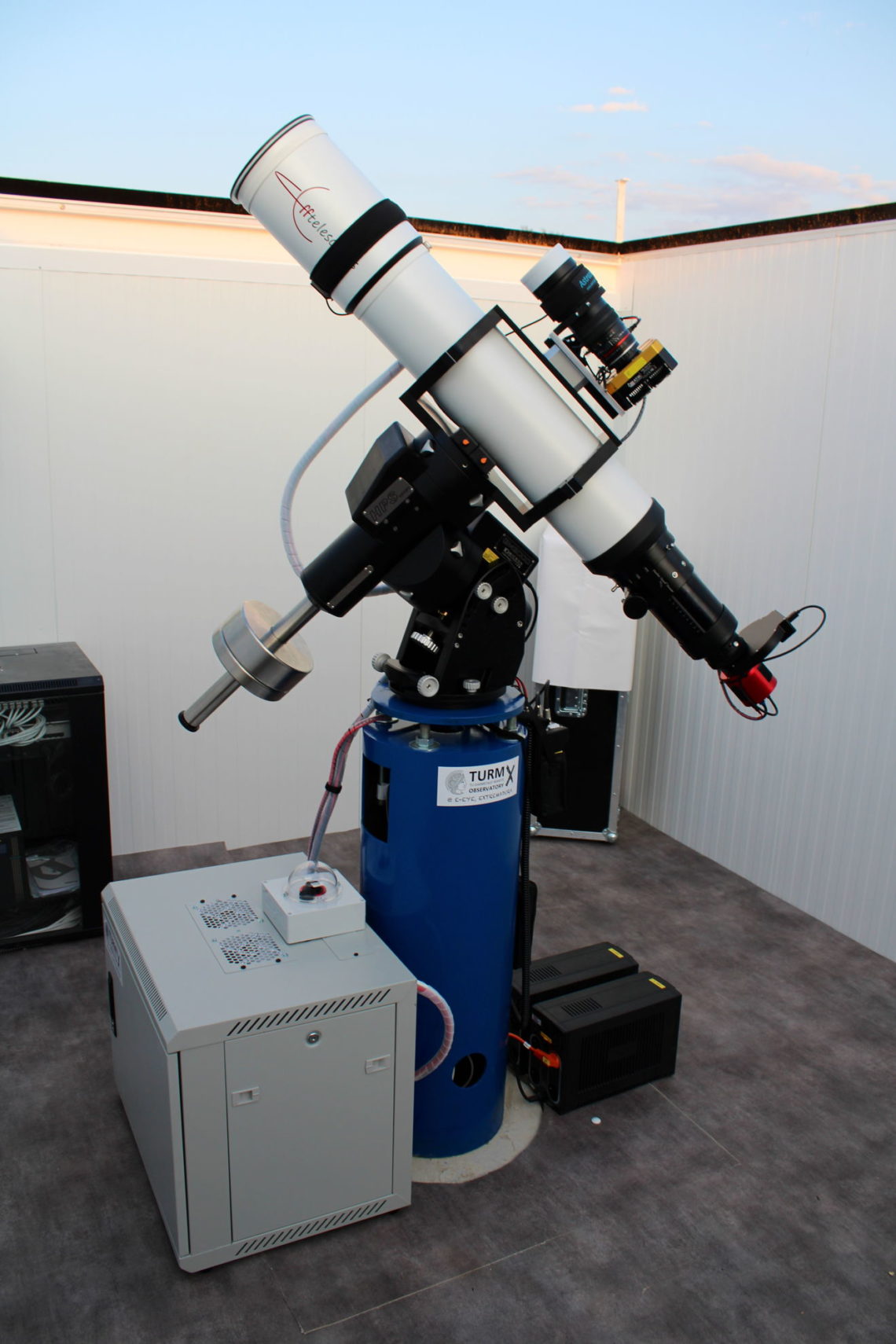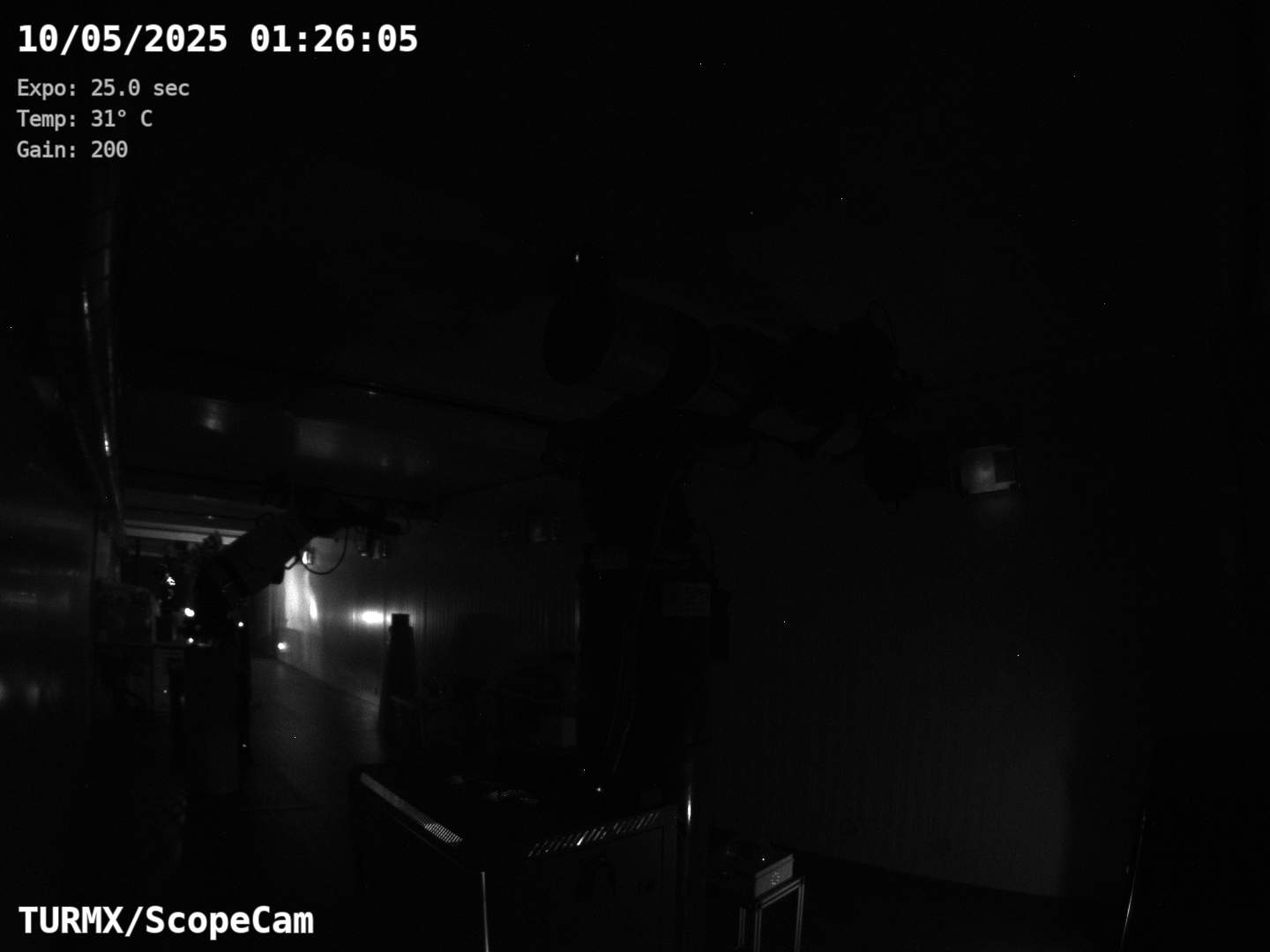The TURMX Observatory at the E-EyE Astronomical Complex near Fregenal de la Sierra in the Extremadura region in Spain ist fully remote operated. Although the are E-EyE technicians on site, in case of technical problems, the goal is to run the setup over an extended period of time without touching it. Therefore, robustness and simplicity the prime design goals.

The image above shows a couple of the E-EyE observatory modules. Each of the modules houses 8 separate telescope setups with individually controlled roll-off-roofs. Thus, we can handle all aspects of the observatory operation ourselves, such as, monitoring the weather conditions and closing or opening the roof accordingly.
Our setup is depicted on the right. The main instrument is a triplet apochromatic refractor by CFF Telescopes with 160mm aperture and 1050mm focal length. It is an fantastic instrument producing pin-point stars. It is sitting on a 10Micron GM 2000 HPSII equatorial mount, which allows us to track the movement of the stars across the sky without active guiding control.
The camera we are using right now is an ZWO ASI 6200mm Pro cooled monochrome camera with a filter wheel equipped with luminance, red, green, and blue broad-band filters and Hα, OIII, and SII narrow-band filters. In combination with the main refractor the camera gives an angular resolution of 0.74 arcsec per pixel with a field of view about 2 degrees wide.
For really wide-field images, we have a tiny secondary telescope rising piggy-back on the main refractor. Actually, it is not a real telescope but a Samyang camera lens with 135mm focal length a a fast f/2.0 aperture. It is connected to an ATIK One 6.0 cooled CCD camera with integrated filter wheel with broad and narrow-band filters. This system has a field-of-view of more than 5 by 4 degrees.
All electronics, power supplies and computers are sitting in the gray rack unit at the base of the pier. The controls computer runs the whole observatory and setup automatically, based on an observation “script” the user has to provide. So, we don’t have to spend the whole night watching the telescope taking long-exposure images. Typically we initiate the observing session for the night the day before and check the new images, which are automatically uploaded to our cloud storage, the next morning.
Of course, if you like to spend the night watching the telescope doing its job, we have several cameras that monitor the setup – just in case something goes wrong. Below is an up-to-date image of the setup, also check out the other Live Views of the observatory.


